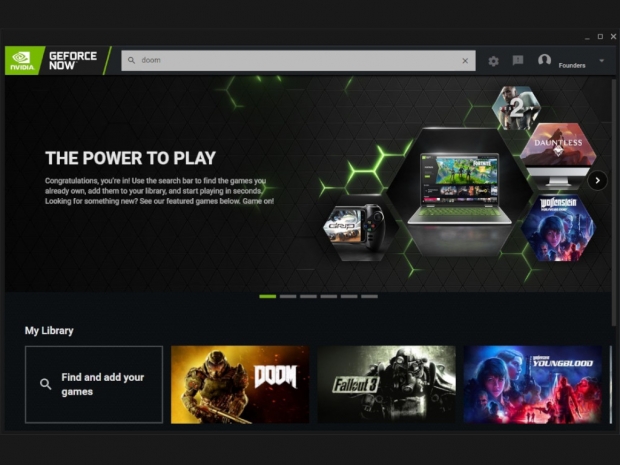Over the years, it was clear that things will move to a subscription basis. Back in early 2008, I sat with Jensen, CEO of Nvidia, who, back then, had a vision that mobile will become dominant. His second prediction was that a subscription base model services would play a significant role in the future. The conversation took place before the iPhone and Android dominance and before Netflix and Co's streaming business. Today, twelve years later, we can say that his vision was spot on.
Geforce Now, a long journey
The Geforce Now is what you can describe as a seven-year effort. It builds upon Geforce Grid, a service that lets Nvidia Shield play games on remote servers. It was the first important step and marks a similar concept as Geforce Now but with a significant distinction. Geforce Now can be played on Apple computers, PCs, Android phones, and Shield. You don’t need a big GPU and still get high resolution, frame rates, and experience. Your thinnest and lightest Apple Air or Dell XPS 13 has suddenly become a gaming machine.
Nvidia’s Geforce Now is a simple 70 MB download and installs fast. Once you log in, you are ready to go. Geforce Now loves it if you have a 50 Mbps or faster connection and in our testing our 300 Mbps connection was more than enough for 8ms lag and excellent performance.
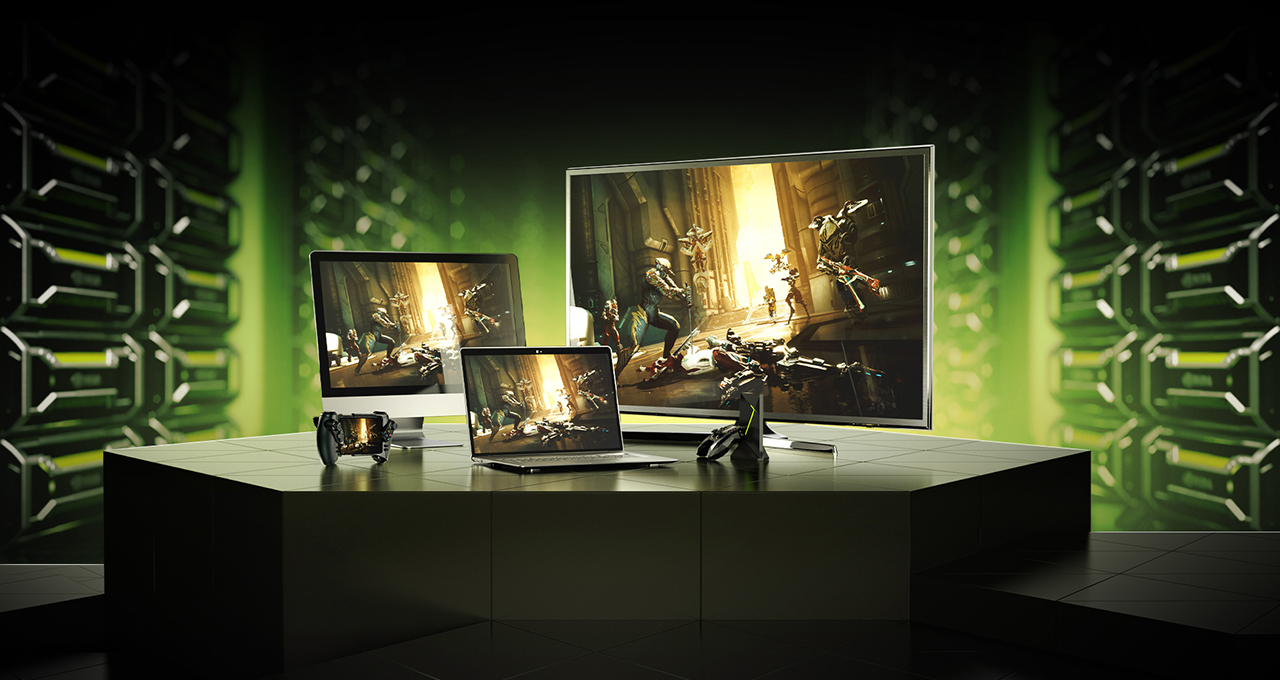
The Netflix of gaming, if you own a game
People have compared the Geforce Now Beta to the Netflix of gaming, which is only partially accurate. Nvidia is letting you use its Geforce based hardware from the cloud and it is free for an hour session for standard subscribers, or $4.99/€5.49/£4.99 for the Founders Edition which gives no gaming time limitation and enjoys a higher priority if there is a queue.
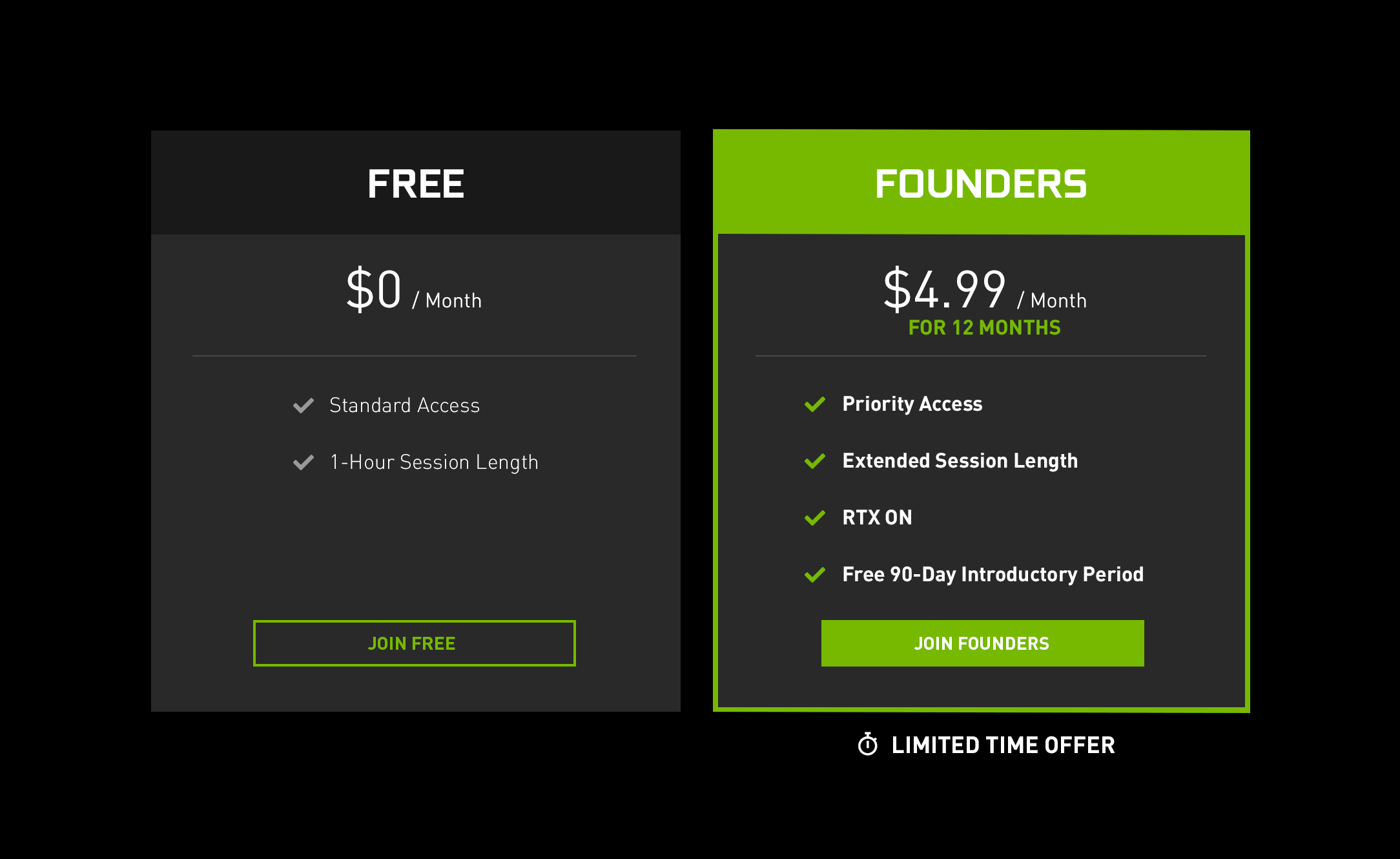
The Geforce Now is the Netflix of gaming as long as you own or buy a game. Founders will be able to play Raytraced games as well, again as long as they own them. Google Stadia (Plural of the stadium) asks you to spend $129 for a controller, and the first reviews from November were messy. Steve, from Gamers Nexus, had a firm opinion of how messed up was the Google Stedia launch. Let us take a moment and mention that Google partnered with AMD for the cloud gaming hardware, but AMD is not responsible for the bad experience, it was Google who messed it up.
Nvidia insists that Founders Edition owners won't be waiting, and that is what the fee is insuring. The price is guaranteed for the rest of 2020, while there is an indication and sense that price might increase at a later date.
The company has built massive data centers around the world and enables you to rent a high-end Geforce gaming experience. The data centers in North America, Western Europe are own by Nvidia while Russia, Japan, and Korea have a service run by Nvidia partners.
In order to get to the publicly available service, Nvidia worked with 300,000 beta testers who helped refine the gaming platform. These gamers managed to stream 70 million hours of gaming just in the last year coming from 30 countries.
How it works
Our speedy connection ensured we had 8ms ping, which felt great while playing Raytraced Wolfenstein Youngblood. Nvidia added me to the EU Central 3 data center that was 8ms away from Vienna, Austria.
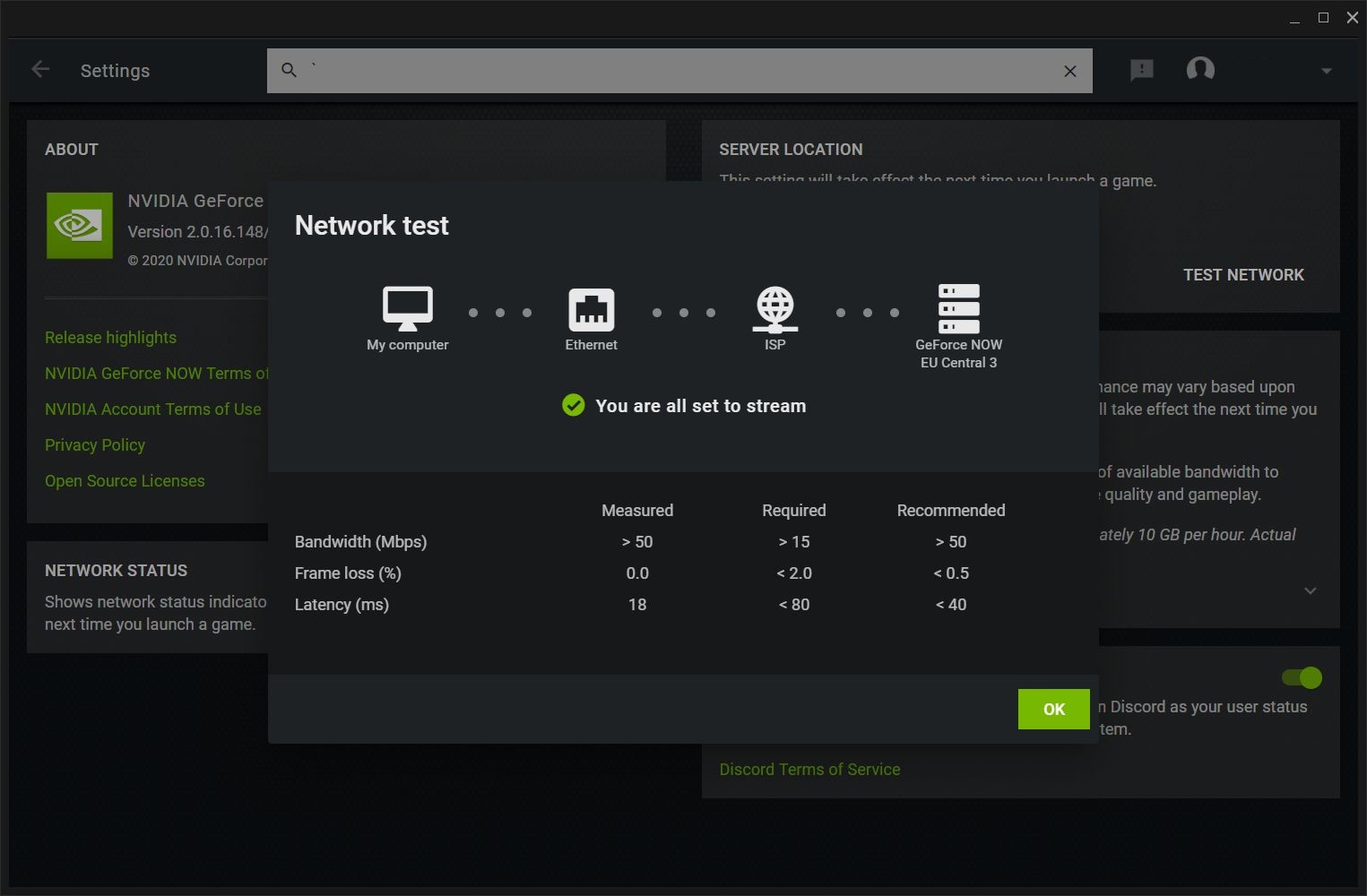
Nvidia recommends sub 40ms while the sub 80 ms is required. Nvidia likes it if your frame loss is less than 0.5 percent, and, in our case, we didn’t notice a single one. Nvidia requires more than 15Mbps to work, while it recommends faster than 50 Mbps. You add your game to the library, and install it the first time. It is essential to mention that installation takes seconds, and after the first one, you log to a streaming service like Steam and can play the game.
There are a few free-to-play games, but most games have to be owned or purchased by you. I tried Far Cry 4 as well, one of the old ones I had in my library, and it also worked well. Depending on the game, Nvidia chooses if it will connect you to a Raytracing enabled data center or the one with non-Ray tracing GeForce data farms.
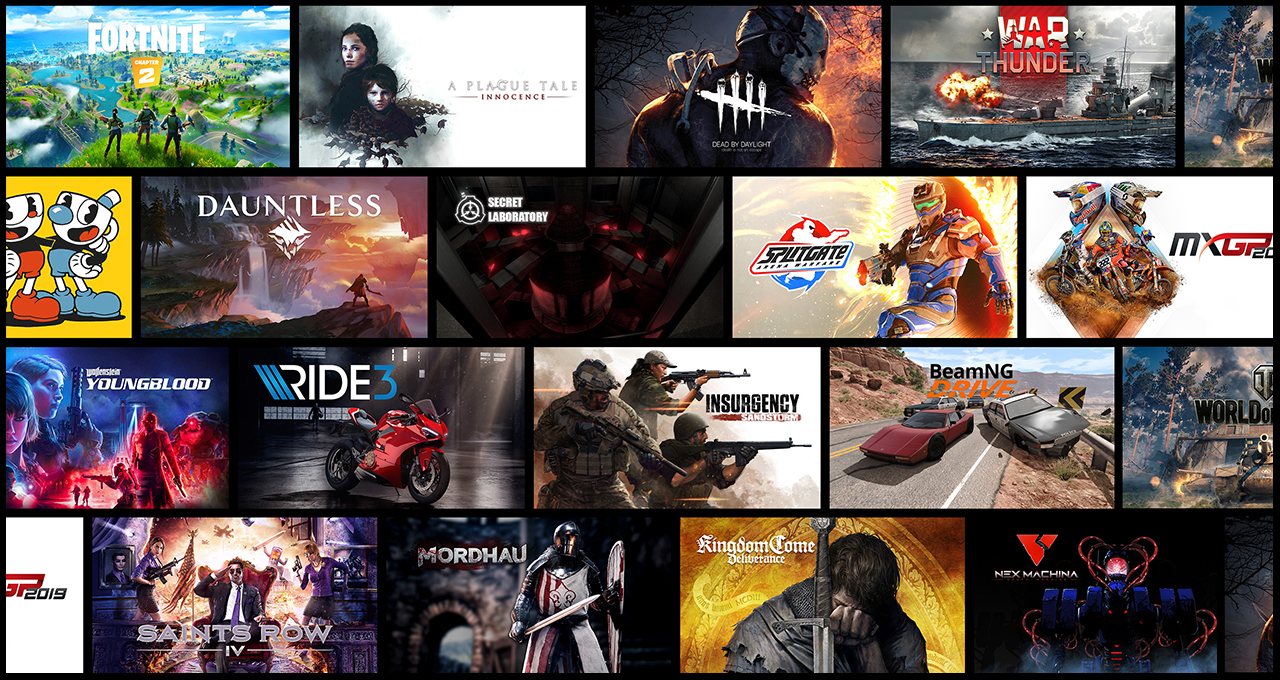
In our case, the service worked well, and we got to try the Founders Edition as soon as it became available. It just runs your game well, and the picture quality is quite good. Right now, Nvidia lets Founders play for free for the first 90 days.
The highest resolution allowed during our testing was 1920x1200 at 16:10 screens of 1920x1080 for 16:9 screens. The frame rate is locked to 60 FPS, but Nvidia does allow custom settings, including a competitive mode that drops the resolution to 1280x720 but increases the frame rate to 120 FPS.
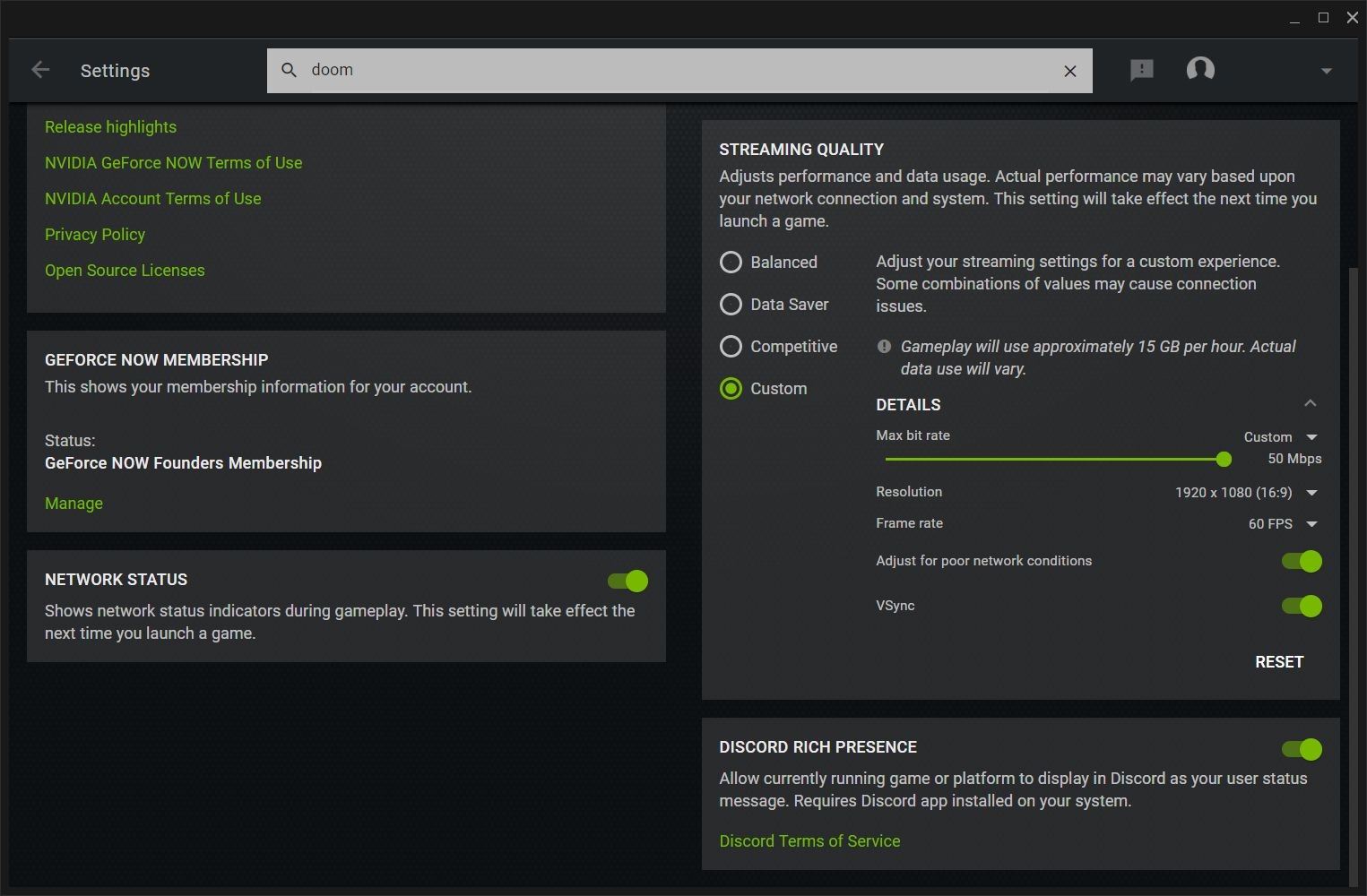
Nvidia warns that at 1920x1080, 60 FPS an hour of gaming will eat up 15 GB of data. Now, this service is meant for an internet connection with an unlimited data plan.
One of the shortcomings is that the Bethesda gaming platform is not supported, so if you own games on that platform, you won't be able to play them just yet. Another is that not all games will be available, especially the latest and greatest. Those two arguments are not critical as most gamers will end up buying games on supported platforms, while using the Founders or free mode, and all will be fine.
Geforce Now enables new PC gamers
Geforce Now is a vital milestone for Nvidia. It will allow Tesla-based data center gaming hardware to sell, well for the most part internally. AMD sells GPUs for Stadia to Google, while Nvidia uses its own data center GPUs and lets gamers play a variety of games. More importantly, the subscription-based gaming service will enable more PC gamers. The number is set to increase from existing 200 million PC gamers. Geforce Now had 300,000 beta test users and since it is public, the number will quickly soar. MacBook users who like to play games will become new PC gamers, and the same goes for Android users. Gamers' weak PCs with integrated or slow GPU will vastly benefit from the service. The financial market recognized the importance of this launch as it increases the total amount of PC gamers. Nvidia is working with all streaming platforms and not against them.
The vital argument that leads to the success of Geforce Now beta was cooperation with game publishers, and we are just at the beginning. If all goes according to plan, Steam, Uplay, Epic game store, Battle.net will end up selling more gamers to users who traditionally never bought these high-end PC games as they didn’t have the hardware to support it. There is naturally space for fine-tuning, but we like what we’ve seen so far.
One of the conversations that I had with Jeff Fisher, an EVP of Nvidia, and a key person behind the Geforce team, included a lot of skepticism from my side about the success of Geforce Now. I didn’t think that Phil Eisler, a general manager of Geforce Now and his team, could make a successful gaming platform. Earlier in 2019, I thought that Google Steadia will be the one that we praise in the article and not Geforce Now. Well, Fisher, Eisler, and army of people behind Geforce Now nailed it. It has created something new and useful that any PC gamer always dreamed of. It lets you play high-end gamers on a very thin and lite MacBook or laptop.
Disclaimer. Article originally by ACAnalysis. ACA provides or has provided paid research, analysis, or consulting to many high-tech companies in the industry on Go-To-Market Strategy, PR, Product testing, Positioning, SWOT Analysis, Content, Message testing, Patents & Legislation, Modem technologies, Hardware, Smartphone, Software for IBM, MediaTek, Qualcomm, Intel, Nvidia, Xilinx and others that might be mentioned in the article.

